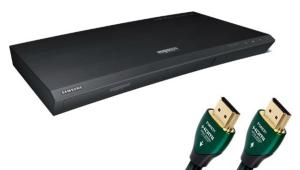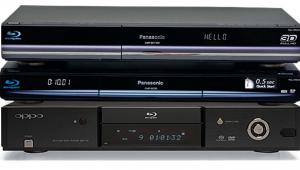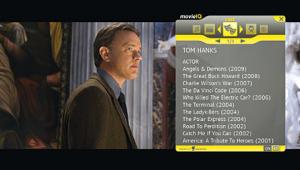Göztepe puan durumları, kulüp futbolunun başarısını ve sezon içindeki performansını yansıtan önemli bir göstergedir. Her sezon, Göztepe'nin Süper Lig'deki maç sonuçlarına göre güncellenen puan durumu, takımın ligdeki genel sıralamasını ve başarı seviyesini belirler.
BD-Live Under Scrutiny Page 2
BD-Live offers the potential for a studio to continually refresh a movie’s bonus features. Suppose a director records a new commentary after his film has already been released on Blu-ray. Owners of the disc could download that commentary without having to buy a new Special Edition re-release. But that’s rarely the case. Most studios would prefer to sell fans a second copy of the movie than to give them a free supplement they didn’t pay for the first time. In fact, some BD-Live content is available only for a limited time. On Starship Troopers 3: Marauder and Resident Evil: Degeneration, Sony posted convention footage and interviews from Comic-Con on BD-Live. Those clips then expired after a short window. I have a hard time understanding the reasoning behind that.
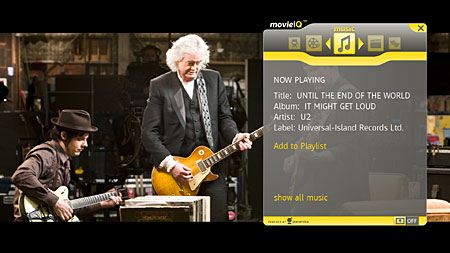
Among the better applications, some discs have genuine interactive content that couldn’t be achieved without the Internet. Of all the studios, Warner Brothers has been the most aggressive in developing and promoting Blu-ray’s online features. The studio has hosted several live-chat events on major releases such as The Dark Knight, Terminator Salvation, and Watchmen. (Universal hosted a similar chat for Hellboy II.) In these, viewers can watch the movies while they text-message onscreen questions to the directors. Unfortunately, these are one-time-only events. If you miss the live chat, you’ll have to read the text recap on the studio’s Website afterwards. Nonetheless, this is an exciting and innovative feature. If you can’t attend a director’s chat, you may like to schedule a Community Screening with friends to watch titles like Harry Potter and the Half-Blood Prince. Similarly, Lionsgate has a MoLog live-blogging feature on Saw IV, Transporter 3, and others.
With that said, I must ask whether Blu-ray is really an appropriate vehicle for social networking. For one thing, it’s impractical. Keypad simulators are slow and awkward. Who wants to use the arrow keys on a player remote to type messages letter by letter? While some features may allow the use of laptops or PDAs to speed up this process, it’s usually faster and easier to just hop on a computer or smartphone to do those things. Perhaps more importantly, movie watching has traditionally been a passive experience. There’s a reason why movie theaters instruct patrons to turn off their cell phones and refrain from calling or texting during the film. Interactivity can be great when you’re delving into supplemental makingof content. But while you’re watching the movie itself, most people would prefer not to be distracted. Is there an actual need for chat options during a movie? Or have studios added it just because they could?
I think even Blu-ray developers realize that they haven’t quite found the killer app for BD-Live yet. They keep trying new strategies. Warner lets viewers upload fan commentaries that can be accessed on the studio’s Web portal via the appropriate disc. Interesting, but does anyone actually listen to them? I honestly don’t know the answer to that. Universal’s pocketBLU lets you use an iPhone as a remote control for your Blu-ray player. Is that useful? Not really, since it only works with selected Universal discs and nothing else.
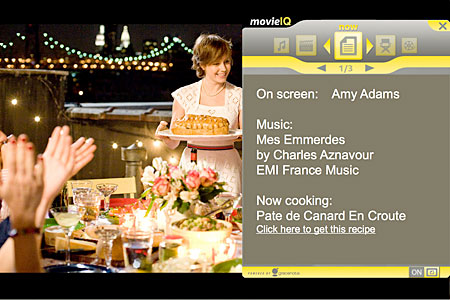
Sony thought it had a killer app with movieIQ. This feature pulls up cast and crew listings, soundtrack info, and trivia. All of this is scene specific and continually updated with the latest information from Gracenote. Ever watched a movie and couldn’t place where you’d seen a supporting actor before? Or heard a song on the soundtrack and really wanted to know the name of the artist? Of course you have. MovieIQ is supposed to solve that problem with the push of a button. Sounds great, right? Too bad the implementation is flawed. The movieIQ feature only works if you have the foresight to turn it on before the movie starts. You can’t activate it on the fly if you unexpectedly realize that you need it. In most cases, you’ll be able to find the information on a computer or phone faster than you would by restarting the film with movieIQ. Fox has a similar feature called Live Lookup that uses IMDb data instead of Gracenote. It’s a little better, but it still has similar issues.
Is There Anything Worthwhile?
I don’t mean to suggest that BD-Live is a total bust. I quite like the Internet features on all three box sets of Star Trek: The Original Series. Through the dynamicHD platform, you can access cast and character bios, photo galleries, and text databases with information on aliens, ships, technology, and locations. It’s like an interactive Trek encyclopedia. The producers of Lost have tried to push the boundaries of the BD-Live experience with the Lost: The Complete Fifth Season box set. In the “Lost University” feature, you can enroll in a series of online video lectures about topics related to the show like time travel, philosophy, and jungle survival. For each course you pass, you unlock more advanced classes. It’s a pretty neat idea and a lot more interesting than most BD-Live features to date.
Still, even in both of these cases, I can’t help but think that the material would work better on a regular Website rather than BD-Live. What’s the point of loading a disc into a Blu-ray player just to read or view material that would be more convenient to access on a computer? Restricting this content to BD-Live only limits its potential audience.
All told, BD-Live still seems like a missed opportunity. The lack of standardization has been a major obstacle to its acceptance and success. Why must separate studios create similar products (like movieIQ and Live Lookup) to compete against one another? Why would any user ever want to install a networked iPhone app like pocketBLU that only works with specific Blu-ray Discs from one studio? These issues only serve to confuse and frustrate Blu-ray viewers. BD-Live development should have been coordinated among all the studios and centralized to a common network early in the format’s life. Because it wasn’t, Blu-ray Internet interactivity may never live up to its promised potential.
- Log in or register to post comments

